Night-flowering Catchfly
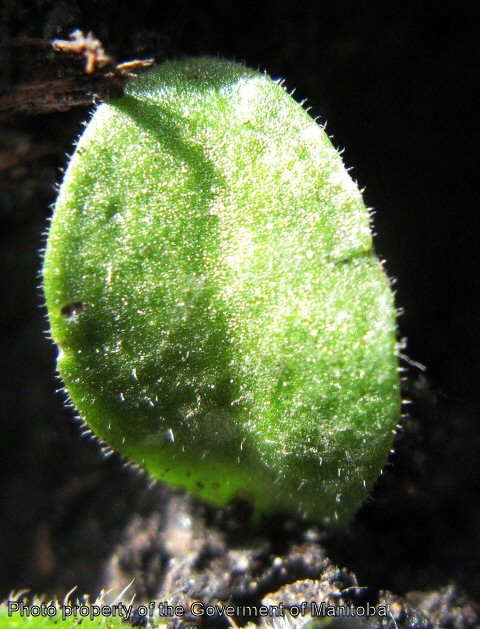 click to enlarge |
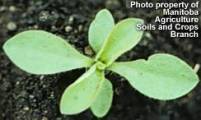 |
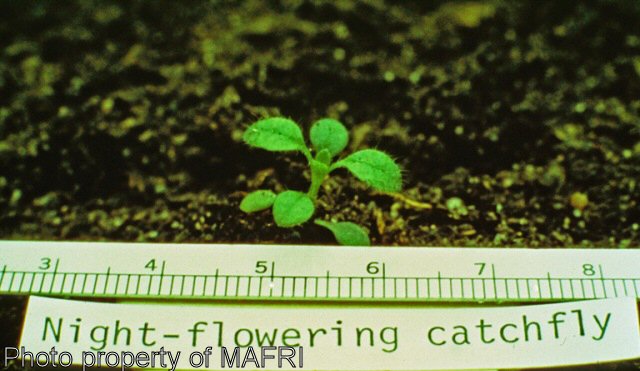 |
||
 |
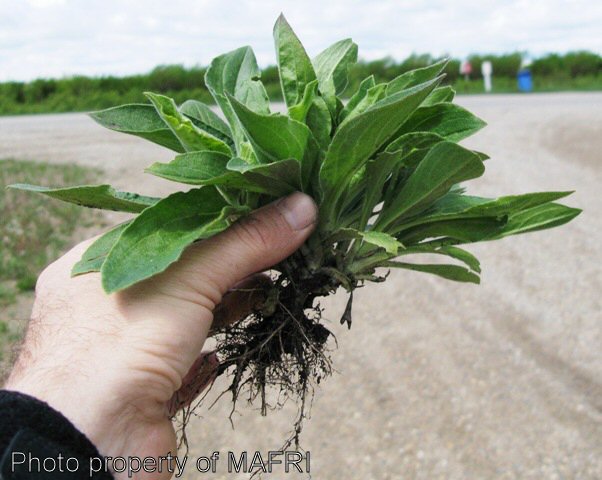 |
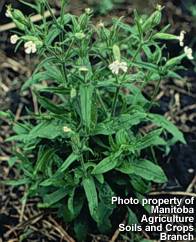 |
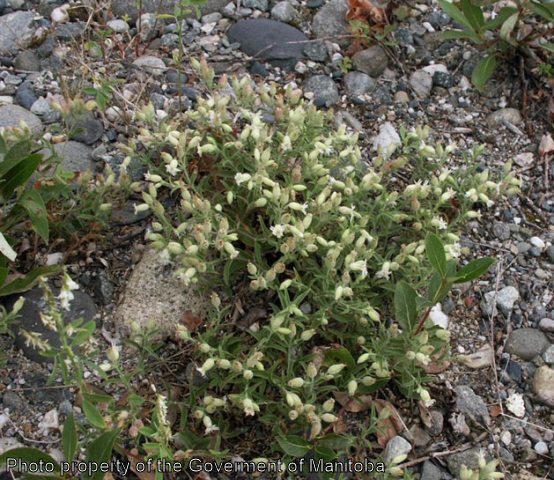 | |
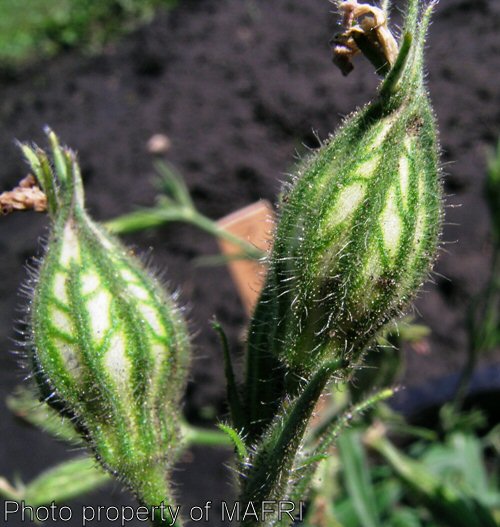 |
 |
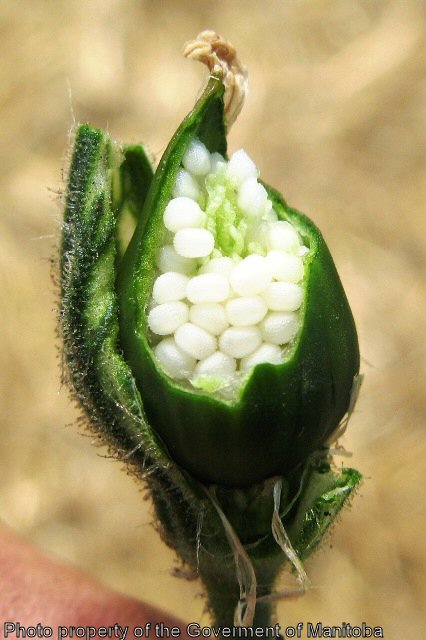 | ||
 |
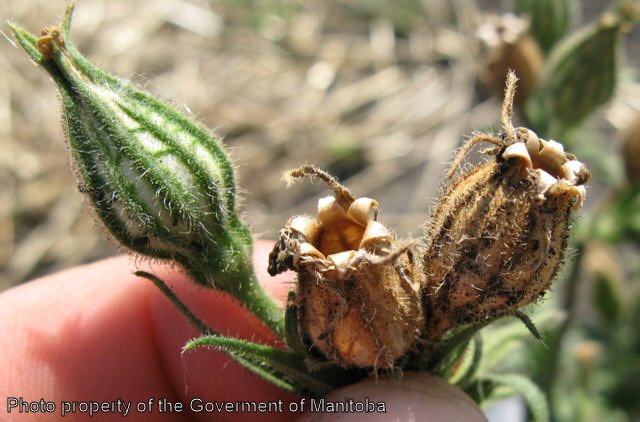 |
 |
||
Biology
This is an annual or winter annual, reproducing by seeds. The stems are erect, up to 1 m tall with swollen nodes, covered with dense sticky hairs, and branched on the upper part of the stem. The leaves are opposite, covered with short sticky hairs, hence the name "catchfly", 5-12 cm long x 4 cm wide. The lower leaves have broad petioles and the upper leaves are almost sessile. The flowers are on individual stalks in a branched inflorescence, consist of 5 petals, and are creamy white to pink in colour. Each flower has a calyx with 5 teeth and 10 veins surrounding it. The seeds are enclosed in a capsule, about 1 mm long, covered by rows of bumps, and grey in colour. This weed requires high temperatures for germination (20°C).
This weed is an impurity in clover and forage seed. Objectionable by livestock due to its pungent flavour and woody texture. It competes well in pastures due to selective grazing.
Scouting Techniques
Take a minimum of 20 weed counts across the field.
Control Tips
- Group 3 herbicide application before planting
- Group 6 herbicide application post-emergence
- stubble burning believed to reduce populations
- resistant (somewhat) to group 4 herbicides (metabolize)
- Group 9 &10 in herbicide tolerant crops

